Sven E. Jorgensen, Fu-Liu Xu, Robert Costanza1566706653, 9781566706650
Table of contents :
1566706653……Page 1
The Editors……Page 6
Contributors……Page 8
Contents……Page 12
1.1 THE ROLE OF ECOSYSTEM HEALTH ASSESSMENT IN ENVIRONMENTAL MANAGEMENT……Page 24
REFERENCES……Page 27
2 Application of Indicators for the Assessment of Ecosystem Health……Page 28
2.1 CRITERIA FOR THE SELECTION OF ECOLOGICAL INDICATORS FOR EHA……Page 29
2.2.1 Level 1……Page 30
2.2.4 Level 4……Page 31
2.2.6 Level 6……Page 32
2.3 INDICES BASED ON INDICATOR SPECIES……Page 33
2.3.1 Bellan’s Pollution Index……Page 34
2.3.3 AMBI……Page 35
2.3.5 Macrofauna Monitoring Index……Page 36
2.3.7 Conservation Index……Page 37
2.4 INDICES BASED ON ECOLOGICAL STRATEGIES……Page 39
2.4.3 Infaunal Index……Page 42
2.4.4 Feldman Index……Page 43
2.5.1 Shannon-Wiener Index……Page 44
2.5.2 Pielou Evenness Index……Page 45
2.5.6 Deviation from the Log-Normal Distribution……Page 46
2.5.9 Average Taxonomic Distinctness……Page 47
2.6.1 ABC Method……Page 48
2.7 INDICATORS INTEGRATING ALL ENVIRONMENT INFORMATION……Page 49
2.7.2 Coefficient of Pollution……Page 50
2.7.5 Biotic Integrity (IBI) for Fishes……Page 51
2.7.7 Estuarine Ecological Index (EBI)……Page 52
2.8 PRESENTATION AND DEFINITION OF LEVEL 7 AND 8 INDICATORS – HOLISTIC INDICATORS……Page 53
2.9 AN OVERVIEW OF APPLICABLE ECOLOGICAL INDICATORS FOR EHA……Page 69
2.10.3 Ecosystem Health Index Method (EHIM)……Page 70
2.11 AN INTEGRATED, CONSISTENT ECOSYSTEM THEORY THAT CAN BE APPLIED AS THE THEORETICAL BASIS FOR EHA……Page 72
REFERENCES……Page 78
Additional References……Page 86
APPENDIX A……Page 88
3 Application of Ecological Indicators to Assess Environmental Quality in Coastal Zones and Transitional Waters: Two Case Studies……Page 90
3.1 INTRODUCTION……Page 91
3.2 BRIEF REVIEW ON THE APPLICATION OF ECOLOGICAL INDICATORS IN ECOSYSTEMS OF COASTAL AND TRANSITIONAL WATERS……Page 92
3.2.1 Indicators Based on Species Presence vs. Absence……Page 93
3.2.2 Biodiversity as Reflected in Diversity Measures……Page 99
3.2.5 Indicators Accounting for the Whole Environmental Information……Page 100
3.4.1 Study Areas and Type of Data Utilized……Page 101
3.4.3 Summary of Results……Page 106
3.5.1 Application of Indicators Based on the Presence vs. Absence of Species: AMBI……Page 117
3.5.3 Biodiversity as Reflected in Diversity Measures: Margalef and Shannon-Wienner Indices……Page 118
3.5.5 Thermodynamically Oriented and Network Analysis-Based Indicators: Exergy Index, Specific Exergy and Ascendancy……Page 119
3.5.6 Brief Conclusions……Page 120
REFERENCES……Page 122
4 Development and Application of Ecosystem Health Indicators in the North American Great Lakes Basin……Page 128
4.1.1 Background on the Great Lakes Basin……Page 129
4.1.2 Indicator Selection……Page 130
4.1.3 Definition of the Selected Indicators……Page 132
4.2.1 Ecological Description of the Great Lakes Basin……Page 133
4.2.2 Data Collection Methods……Page 135
4.3.1 State Indicators – Complete……Page 136
4.3.2 State Indicators – Incomplete……Page 138
4.3.3 Pressure Indicators – Complete……Page 139
4.3.4 Pressure Indicators – Incomplete……Page 142
4.3.5 Response Indicators – Incomplete……Page 144
4.4.1 Land Use……Page 145
4.4.4 Toxic Contamination……Page 146
4.5 CONCLUSIONS……Page 147
REFERENCES……Page 148
5 Application of Ecological and Thermodynamic Indicators for the Assessment of Lake Ecosystem Health……Page 150
5.1.1 Ecosystem Type and Problem……Page 151
5.2.1 A Theoretical Frame……Page 152
5.2.2 Development of Indicators……Page 153
5.2.3 Calculations for Some Indicators……Page 158
5.3.1.1 Selecting Assessment Indicators……Page 159
5.3.2. Case 2: Ecosystem Health Assessment for Lake Chao Using DMM and EMM……Page 166
5.4.1 About Assessment Results……Page 175
5.4.2. About Assessment Indicators……Page 176
5.4.3. About Assessment Methods……Page 177
5.5 CONCLUSIONS……Page 179
REFERENCES……Page 180
6 Ecosystem Health Assessment and Bioeconomic Analysis in Coastal Lagoons……Page 186
6.1 INTRODUCTION……Page 187
6.2 STUDY AREA: SACCA GORO……Page 188
6.3.1 Biogeochemical Model……Page 191
6.3.2 Discrete Stage-Based Model of Tapes Philippinarum……Page 193
6.3.4 Cost/Benefit Model……Page 194
6.4.1 The Existing Situation……Page 195
6.4.2 Harvesting Ulva Biomass……Page 197
6.4.3 Reduction in Nutrient Inputs……Page 201
6.5 CONCLUSIONS……Page 203
REFERENCES……Page 205
7 Application of Ecological and Thermodynamic Indicators for the Assessment of the Ecosystem Health of Coastal Areas……Page 208
7.2 RESULTS……Page 209
7.3 DISCUSSION……Page 211
7.4 CONCLUSIONS……Page 214
REFERENCES……Page 215
8.1 INTRODUCTION……Page 216
8.2.1 Environmental and Habitat Indicators……Page 218
8.2.3 Size-Based Indicators……Page 220
8.2.4 Trophodynamic Indicators……Page 221
8.4 PRIMARY PRODUCTION REQUIRED TO SUSTAIN FISHERIES……Page 222
8.6 FISHING IN BALANCE……Page 223
8.7.1 Environmental and Habitat Indicators……Page 225
8.7.2 Size-Based Indicators……Page 226
8.7.3 Trophodynamic Indicators……Page 227
8.8 CONCLUSION……Page 230
REFERENCES……Page 231
9 Using Ecological Indicators in a Whole-Ecosystem Wetland Experiment……Page 236
9.1 INTRODUCTION……Page 237
9.2.1 Site History……Page 238
9.2.2 Macrophyte Community Index……Page 239
9.2.4 Similarity Index……Page 240
9.3.1 Macrophyte Community Diversity……Page 241
9.3.3 Algal Development……Page 244
9.3.5 Water Chemistry……Page 246
9.3.7 Avian Use……Page 248
9.3.8 Basin Similarity……Page 249
9.4.1 Community Diversity and Ecosystem Function……Page 250
9.4.4 Aquatic Consumers……Page 254
9.4.5 Replication and Experimental Scale……Page 256
REFERENCES……Page 258
10.1 INTRODUCTION……Page 262
10.2 EXERGY AND ECOLOGY……Page 263
10.3 EMERGY AND ECOLOGY……Page 264
10.4 THE RATIO OF EXERGY TO EMERGY FLOW……Page 265
10.5 THE RATIO OF DEX TO DEM……Page 268
REFERENCES……Page 270
11 Application of Thermodynamic Indices to Agro-Ecosystems……Page 272
11.1 INTRODUCTION……Page 273
11.2 SIMPLIFIED ENERGY AND ENTROPY BALANCES IN AN ECOSYSTEM……Page 276
11.3 ENTROPY OVERPRODUCTION AS A CRITERION OF THE DEGRADATION OF NATURAL ECOSYSTEMS UNDER ANTHROPOGENIC PRESSURE……Page 279
11.4 WHAT IS A “REFERENCE ECOSYSTEM”?……Page 281
11.5 AGRO-ECOSYSTEM: THE LIMITS OF AGRICULTURE INTENSIFICATION AND ITS ENTROPY COST……Page 283
11.6 CONCEPT OF SUSTAINABLE AGRICULTURE: THE THERMODYNAMIC CRITERION……Page 285
11.7 SOIL DEGRADATION: THERMODYNAMIC MODEL……Page 286
11.8 “ENTROPY FEE” FOR INTENSIVE AGRICULTURE……Page 288
11.9 HUNGARIAN MAIZE AGRICULTURE……Page 289
11.10 AGRICULTURE IN NORTHERN GERMANY (STEINBORN AND SVIREZHEV, 2000)……Page 291
11.11 AGRICULTURE IN SACHSEN-ANHALT (EASTERN GERMANY) AND THE DYNAMICS OF ENTROPY OVERPRODUCTION (LINDENSCHMIDT ET AL., 2001)……Page 295
REFERENCES……Page 296
12 Ecosystem Indicators for the Integrated Management of Landscape Health and Integrity……Page 300
12.1 INTRODUCTION……Page 301
12.2.1 Ecosystem Theory – The Conceptual Background……Page 303
12.2.2 Ecosystem Analysis – The Empirical Background……Page 308
12.2.3 Ecosystem Health and Ecological Integrity – The Normative Background……Page 309
12.3 THE SELECTED INDICATOR SET……Page 310
12.4.1 Indicating Health and Integrity on the Ecosystem Scale……Page 313
12.4.2 Indicating Landscape Health……Page 316
12.4.3 Application in Sustainable Landscape Management……Page 319
12.5 DISCUSSION AND CONCLUSIONS……Page 321
REFERENCES……Page 322
13 Multi-Scale Resilience Estimates for Health Assessment of Real Habitats in a Landscape……Page 328
13.1 INTRODUCTION……Page 329
13.2.1 Ecological Phases, States, and Scale Domains……Page 331
13.2.2 Resilience and Resistance……Page 332
13.3.1 The Baganza Stream Watershed……Page 333
13.3.2 Corine Habitats……Page 334
13.3.3 Empirical Patterns of Self-Similarity……Page 336
13.3.4 Change Intensity Detection……Page 340
13.3.5 Retrospective Resilience……Page 341
13.4.1 Best Regression Models and Scale Breaks……Page 342
13.4.2 Change Intensity Detection……Page 344
13.4.3 Resilience of Habitat Scale Domains……Page 345
13.5.1 Grassland Phase States……Page 347
13.5.2 Scale Domains and Processes……Page 348
13.5.3 Adaptive Cycle and Resilience……Page 349
REFERENCES……Page 351
14.1 INTRODUCTION……Page 356
14.2 A SYSTEMS VIEW OF ECOSYSTEM HEALTH……Page 357
14.3.1 Emergy and Transformity: Concepts and Definitions……Page 359
14.3.2 Hierarchy……Page 362
14.3.3 Transformities and Hierarchy……Page 364
14.3.4 Transformity and Efficiency……Page 365
14.4 EMERGY, TRANSFORMITY AND BIODIVERSITY……Page 366
14.5 EMERGY AND INFORMATION……Page 367
14.6 MEASURING CHANGES IN ECOSYSTEM HEALTH……Page 368
14.7 RESTORING ECOSYSTEM HEALTH……Page 370
14.8 SUMMARY AND CONCLUSIONS……Page 372
REFERENCES……Page 373
15 Mass Accounting and Mass-Based Indicators……Page 376
15.1 INTRODUCTION……Page 377
15.2.1 Historical Background……Page 378
15.2.2 The MAIA Method……Page 379
15.2.3 Calculation Rules……Page 381
15.2.5 Selected Case Studies: Fuel Cells and Hydrogen……Page 382
15.3.2 The Bulk MFA Model……Page 385
15.3.3 The System Boundaries and System Stock……Page 386
15.3.4 Classification of Flows……Page 388
15.3.5 Categories of Materials……Page 389
15.3.6 The Final Scheme and Material Balance……Page 391
15.3.7 Indicators……Page 392
15.3.8 Data Sources……Page 394
15.3.10 Limits and Needed Improvements of MFA……Page 395
REFERENCES……Page 397
16.1 INTRODUCTION……Page 402
16.1.2 Long-Term Data Sets……Page 403
16.3 CHANGES IN WATER QUALITY……Page 404
16.4 CHANGES IN BIOLOGY……Page 406
16.5.1 Water Quality Index (WQI)……Page 410
16.5.4 Ecosystem Indicators……Page 411
16.7 POLICY, DEBATE, AND THE BURDEN OF SCIENTIFIC PROOF……Page 413
REFERENCES……Page 415
17.1 INTRODUCTION……Page 418
17.2.1 Conceptual Framework……Page 420
17.2.2 Health……Page 421
17.2.3 Ecosystem Health……Page 422
17.2.4 Marine Ecosystem Health……Page 429
17.2.5 Ecological or Ecosystem Integrity……Page 431
17.2.6 Ecological Change……Page 433
17.2.7 Marine Environmental Quality (MEQ)……Page 434
17.2.9. Human Health and Marine Ecosystem Health……Page 436
17.3.1 Monitoring Approaches……Page 437
17.3.2 Indicators and Indices……Page 438
17.4 SUMMARY AND CONCLUSIONS……Page 441
REFERENCES……Page 442
Index……Page 454
Back cover……Page 464
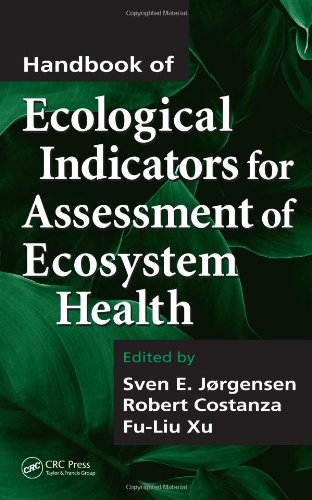
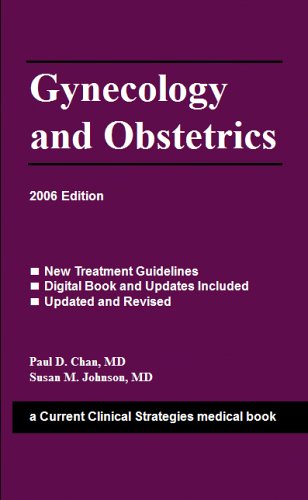

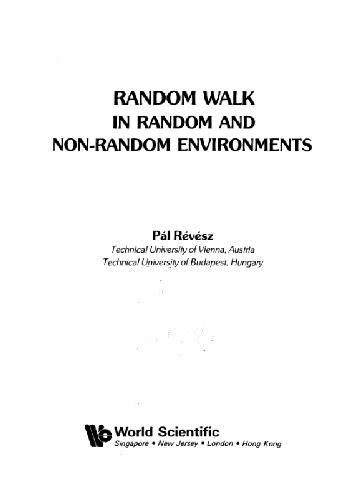
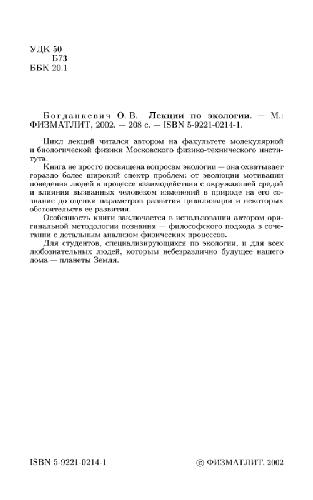
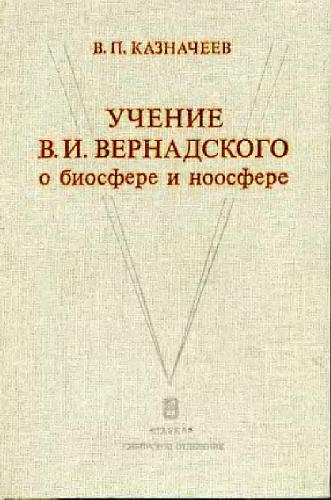

Reviews
There are no reviews yet.